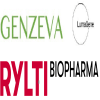Next May, the Food and Drug Administration could approve a new preventative therapy for migraine, adding a new treatment option for the millions of Americans who suffer from the debilitating headache condition.
Developed by Amgen and Novartis, Aimovig (erenumab) would be the first prophylactic drug OK’d for use in migraine since Botox was given a thumbs up in 2010. An approval would also be a validation of the particular way Aimovig works to reduce migraine symptoms — by blocking a receptor called CGRP, or calcitonin gene-related peptide.
Three other CGRP-targeting monoclonal antibodies are speeding through late-stage testing towards potential approval, a level of R&D output that would have been surprising six years ago when Merck & Co. shut down development of its CGRP inhibitor telcagepant due to concerns over liver toxicity.
The pharma’s decision, announced unceremoniously in a spring 2011 update to quarterly earnings, put an end to the company’s efforts in migraine and, at the time, threw doubt on the CGRP approach.
"Clearly for a long time the jury was out whether CGRP was going to be safe as well as effective because the original small molecules were unfortunately liver toxic," explains David Nicholson, chief R&D officer at Allergan, which picked up Merck’s remaining CGRP assets in a 2015 deal.
While attention has centered on the four leading biologics, Allergan isn’t out of the running. The Irish pharma has pushed the two CGRP inhibitors it acquired from Merck, ubrogepant and atogepant, into Phase 3 and Phase 2b studies, respectively. And the company believes it can carve out a multi-billion dollar opportunity of its own, counting on its past experience with migraine and the convenience factor of an oral pill to make up for a late entry.
Safety woes
Telcagepant wasn’t Merck’s first try at developing a small molecule CGRP inhibitor. In 2009, the pharma had shut down its clinical development of another candidate, known as MK-3207, due to liver test abnormalities.
There were concerns about telcagepant too, but Merck pushed ahead with Phase 3 testing, only to terminate the study after 13 patients saw sharp increases in liver enzyme counts.
"Those types of data actually dramatically slowed down the development of CGRPs in migraine," Allergan’s Nicholson said.
"Based on telcagepant and also [Bristol-Myers Squibb] compounds, people wondered whether CGRP antagonism, while it might be effective for treatment of migraine, maybe CGRP antagonism as a mechanism was liver toxic."
But the drug development experience of Amgen’s Aimovig and the three other monoclonal antibodies has given strong evidence that targeting CGRP is likely not liver toxic in and of itself.
"We have seen all the CGRP antibodies fully inhibit that receptor, or the ligand, and not cause any liver tox[icity]. So I think that is a sign that the target is not the issue," says Vamil Divan, a pharmaceutical equity analyst at Credit Suisse.
Allergan believes a byproduct produced by the metabolism of telcagepant might have been the source of toxicity. Differences in the chemical structure of both ubrogepant and atogepant mean that intermediate isn’t produced, Nicholson says.
Other signs pointed to the improved safety profile of the two drugs, giving Allergan the confidence to pick up the assets in its 2015 deal with Merck. And so far in the clinical studies conducted by the Irish pharma, no liver toxicity issues have cropped up, although the studies of both ubrogepant and atopegant remain blinded.
"I am more confident than I was early this year and more confident than I was when they first [did] out the deal," Divan said. "It seems like things are heading in the right direction and [Allergan is] getting validated from the antibodies and from their own data."
If not first, most convenient?
Allergan doesn’t expect to launch ubrogepant, which is designed to treat migraine acutely, until 2020. Atogepant, which would compete more directly with the preventative monoclonal antibodies, is slated for an even later date, likely in 2022.
By then, one or more of the monoclonal antibodies currently under development by the team of Amgen and Novartis, Eli Lilly, Teva or Alder BioPharmaceuticals could be on the market.
Allergan, though, thinks its drugs can compete — even in a more crowded field.
For one, both ubrogepant in acute migraine and atogepant in prophylaxis of migraine would be administered orally. Amgen’s, Lilly’s and Teva’s are all given through subcutaneous injections, and Alder’s is delivered intravenously.
"I believe that for migraine prophylaxis, history teaches us that people will prefer to take a daily pill," Nicholson counters.
Beyond convenience, small molecule drugs also tend to be cheaper than large molecule biologics — an important consideration in a world where payers are taking harder lines on coverage.
Additionally, Allergan’s experience with Botox could prove to be a considerable leg-up that may preserve the Irish pharma’s window of opportunity.
"They have the reps. They have the relationships with the doctors."

Vamil Divan
Equity analyst, Credit Suisse
"They have the reps. They have the relationships with the doctors. They clearly know the market. I think it is huge advantage actually, especially for them relative [to the CGRP antibody companies]," Divan said.
According to Nicholson, Allergan acquired the two CGRP inhibitors from Merck to expand the range of its offerings in migraine beyond Botox. For those patients who still experience migraine symptoms while taking Botox, ubrogepant could theoretically be used as a spot treatment for any persistent, uncontrolled symptoms.
Little room for error
Phase 3 results for ubrogepant and Phase 2b data for atogepant are both slated to read out in the first half of 2018.
Any potential advantage Allergan might have down the road in migraine would mean little if its drugs don’t show a compelling benefit. While results for ubrogepant would not be comparable to any of the CGRP inhibitors, atogepant needs to roughly match the reduction in monthly migraine days seen in studies of its biologics rivals.
The four drugs have shown an ability to reduce the average number of migraine days by anywhere between three to five days per month (placebo adjusted, between 1 and 2 days). Convenience wouldn't add much if atogepant turns up worse results, especially since all four could potentially see an approval before atogepant’s expected 2022 entry.
Though 2020 and 2022 are some time away, Allergan has collectively marked the drugs as one of its six "star programs" aimed at driving future growth. Together, the pharma expects the two treatments to reach between $1 billion and $2 billion in peak sales — roughly equivalent to the market opportunity forecast for its NASH hopeful cenicriviroc.
Winning approval of ubrogepant could broaden its existing foothold in migraine, adding an acute option to Botox’s indication in chronic migraine. In the best-case scenario, atogepant could then build on that foundation and offer a more convenient and cheaper option to patients and payers. Worst case, though, the large molecule CGRP inhibitors find success, lock up the market and atogepant winds up fifth to market.
Attention has rightly focused on Amgen and Novartis' Aimovig, and the other leading biologic hopefuls. Further behind, Allergan's candidates have been flying under the radar. But the Irish pharma could end up playing more of a role in the space than its current standing suggests.






















